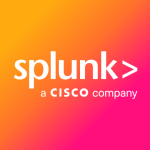What is our primary use case?
The use case with the business case actually is using LogPoint as a full-blown team system. And actually to orchestrate incident responses.
It's a SIEM system and if you incorporate detection rules and can set alerts, severities, stuff like that. It's the center of a SOC, basically. That's the main use case for it. Of course, it's also sued to fulfill regulatory compliance, which is making a report every week, every day, every month, according to the auditor, what he wants. That's the basic use case.
How has it helped my organization?
It improves security. You have more oversight of security incidents and everything that's wrong with the infrastructure you can see in LogPoint if you do it right. You can also document it. You can document the state of your organizational security. If you look at your report, your quarterly or monthly report, it gives you an overview of what's the current status, and then it gives you a delta of the status for the last month. That's actually very, very nice. For a CSO, they can track the improvements.
What is most valuable?
The solution's most valuable aspect is the combination of the software and the support that they have. If you use SIEM systems, you always have a problem. You want to onboard an application, yet the logs from that application cannot be understood by the SIEM system. You sometimes have that. If you want to onboard, let's say, a common application to your SIEM system, it usually just works out of the box. However, if you have an exotic application that no one knows, the SIEM system most of the time cannot understand it. But LogPoint offers a translation service. You ship the log files to them and their guys make sure that LogPoint is able to translate it and ingest it. That service is actually really, really nice. And you don't pay for that.
What needs improvement?
One of the downsides is it is not a SaaS solution. It must be on-premises. It's a downside for the industry as it makes no sense to have just the solution as deployable via on-prem hardware. Nowadays, it must come as a solution that you can deploy in the cloud, either in Google, AWS, or Microsoft. It is possible, however, it's not cloud-native. That's a downside and that's a problem. When you can deploy a SaaS, cloud-native solution, then it's much easier than spinning that thing up with an image and stuff like that. SaaS is easier to manage and there are cost savings involved.
It needs to improve performance. That's somehow something that others do better. They need pure speed. Just speed. How they process data, it's not top-notch. It's just average.
For how long have I used the solution?
I've been using the solution for half a year or so, about six months.
What do I think about the stability of the solution?
The solution is pretty stable. However you can crash the system if you did not do the math to calculate the right sizing of the hardware. LogPoint doesn't forgive any undersized storage, memory or compute power.
How are customer service and support?
The support itself was good, however, it was sometimes a bit on the slower side. They were too slow yet the answers were brilliant.
How would you rate customer service and support?
Which solution did I use previously and why did I switch?
I'm with another company right now. Those guys where we used LogPoint, yes, they used something else, which was called AlienVault at the time. I'm not even sure if this still exists as AlienVault anymore.
LogPoint comes with a scheme that goes with endpoints, which, if you have an IP that gives logs business, one counts as one. And if you have 100 servers, you pay just for the 100 servers. How much data they log is just, they do not care. You pay for the three endpoints. If you have one server in, let's say Splunk, and it logs one bite a day, you pay almost nothing. And if you have that same server logging one terabyte, you go bankrupt basically since you have to pay so much with something like AlienVault. They switched due to the fact that LogPoint does not care about the data. They just use the endpoint - which is good for security operation centers.
Another company I worked for used DataDog, which is flexible and cloud-native. They are still with that solution.
How was the initial setup?
The initial setup was straightforward. It was very easy, however, in the beginning, there were some errors and those errors were based on some bugs in the software. It's been worked on and so now it's fixed, however, beyond that, it was pretty straightforward, pretty easy.
You only need one person to do a deployment, however, I recommend three, it depends on your organization You basically need a system administrator that can deploy it. Configuration needs to be done by a security analyst.
There is continued maintenance required. Both of the roles that I just described are needed for maintenance, constant maintenance.
What about the implementation team?
We did the installation ourselves. That said, we had decent training on that. Decent training is necessary and I highly recommended it. You basically cannot do this by yourself with no training. Back in the day, the training we received was facilitated by LogPoint. Nowadays, you can choose big consulting companies as well.
What was our ROI?
I did see an ROI when using the solution. The company that I work for, which is utilizing LogPoint, was using that as a basis for their SOC. They offered the SOC, the security operation services, to other companies. They generated revenue with that.
What's my experience with pricing, setup cost, and licensing?
The pricing is pretty attractive. If you look, they have of course list prices, which are moderate. However, if you really go to them and say, "Hey, I need a discount and I am a public organization." YOu might be able to get lower prices. For an NGO or a foundation or something they likely offer a discount. They give you a special discount and they give good discounts. Also, if you say, okay, "Hey, your business model doesn't work for me as the break-even is 50 endpoints" they give you a decent discount and they're good.
Which other solutions did I evaluate?
I've looked into other SIEM solutions. In comparison, LogPoint works better in the European and German markets due to some unique features in data protection, compared to Splunk or some of the others, even Sentinel.
LogPoint is a very good product for mid-sized companies, especially in Europe. However, for big data chunks, big companies that are either in the cloud or not should use a solution like Splunk or an ELK-like elastic search-based SIEM solution due to the speed.
What other advice do I have?
I am just a customer and end-user.
We use various versions of the solution. The latest version was the one I was using, however, I can't recall the exact version number.
I'd rate the product eight out of ten.
I'd advise potential new users to make sure that their use cases are designed beforehand. When you do a POC, then you need to have a success factor. People sometimes want to have a SIEM solution and then just look at the dashboard, which is total garbage. You need to know exactly what you want from that solution and if this is determined beforehand, then you can do a POC and then you will understand if the solution can deliver what you need - or not.
Which deployment model are you using for this solution?
On-premises
Disclosure: My company does not have a business relationship with this vendor other than being a customer.


















